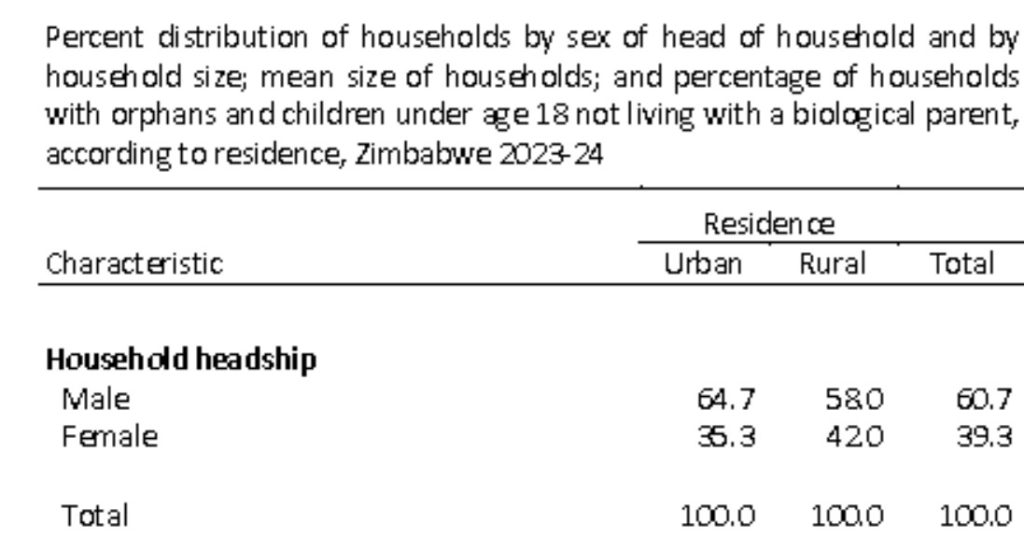Download ZDHS Full report (PDF)
ZDHS 2023/24
The 2023–24 Zimbabwe Demographic and Health Survey (2023–24 ZHDS) is the seventh Demographic and Health Survey conducted in Zimbabwe, following those conducted in 1988, 1994, 1999, 2005–06, 2010–11, and 2015. It was implemented by the Zimbabwe National Statistics Agency (ZIMSTAT) at the request of the Ministry of Health and Child Care (MoHCC).
Data collection took place from 4 December 2023 to 29 May 2024. The survey protocol, including biomarker collection, was reviewed and approved by the ICF Institutional Review Board and the Medical Research Council Zimbabwe (MRCZ).
SURVEY OBJECTIVES
The primary objective of the 2023–24 ZDHS is to provide up-to-date estimates of basic demographic and health indicators. Specifically, the 2023–24 ZDHS collected information on fertility levels, marriage, sexual activity, fertility preferences, awareness and use of family planning methods, breastfeeding practices, nutritional status of mothers and young children, early childhood mortality, maternal and child health, alcohol and tobacco use, knowledge and behaviour related to HIV and other sexually transmitted infections (STIs), use of malaria prevention methods, disability, mental health, accidents and injury, and chronic diseases.
RESPONSE RATES
A total of 11,200 households were selected for the ZDHS sample, of which 10,805 were found to be occupied. Of the occupied households, 10,725 were successfully interviewed, yielding a response rate of 99%. In the interviewed households, 10,018 women aged 15–49 were identified as eligible for individual interviews. Interviews were completed with 9,666 women, yielding a response rate of 97%. In the subsample of households selected for the male survey, 4,535 men aged 15–54 were identified as eligible for individual interviews, and 4,185 were successfully interviewed, yielding a response rate of 92%.
HOUSING CHARACTERISTICS
The 2023–24 ZDHS collected information on access to electricity, flooring materials, the number of rooms used for sleeping, and the frequency of smoking in the home. In Zimbabwe, the share of the population with access to electricity is 67% percent in urban areas and 8% of the rural areas.
The most common flooring material is cement (73%), followed by tiles (12%) and earth/sand (11%). Thirtyeight percent of households use one room for sleeping, 37% use two rooms and 25% use three or more rooms. A majority of households (83%) report that smoking never occurs inside the home.
BIRTH REGISTRATION
The trend in birth registration rates over time reflects significant fluctuations. In 2005-06 ZDHS birth registration stood at 74%. However, the rate experienced a sharp decline to 49% in the 2010-11 ZDHS and then to 44% in the 2015 ZDHS. In the 2023-24 ZDHS, the birth registration rate improved to 57%.
Household composition


